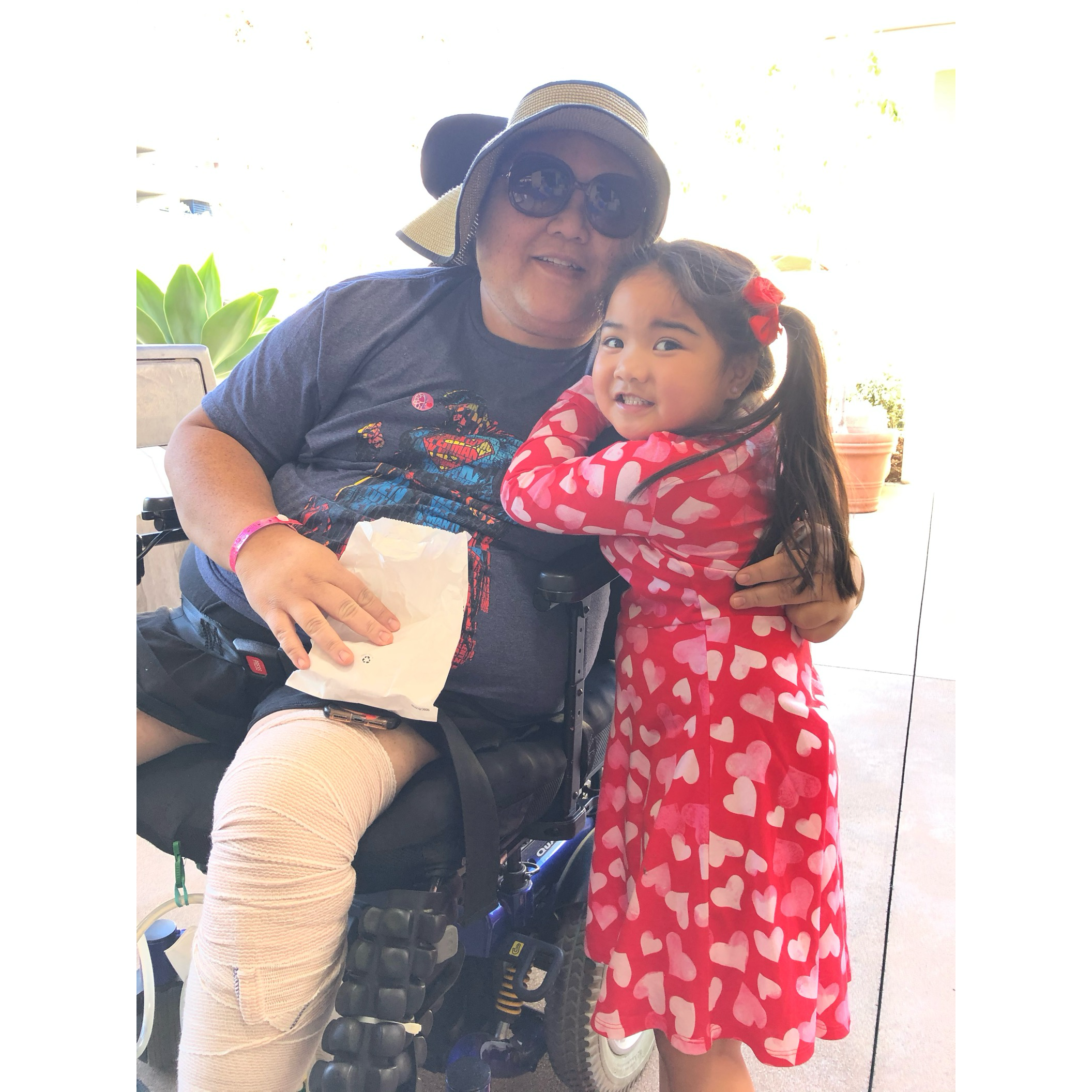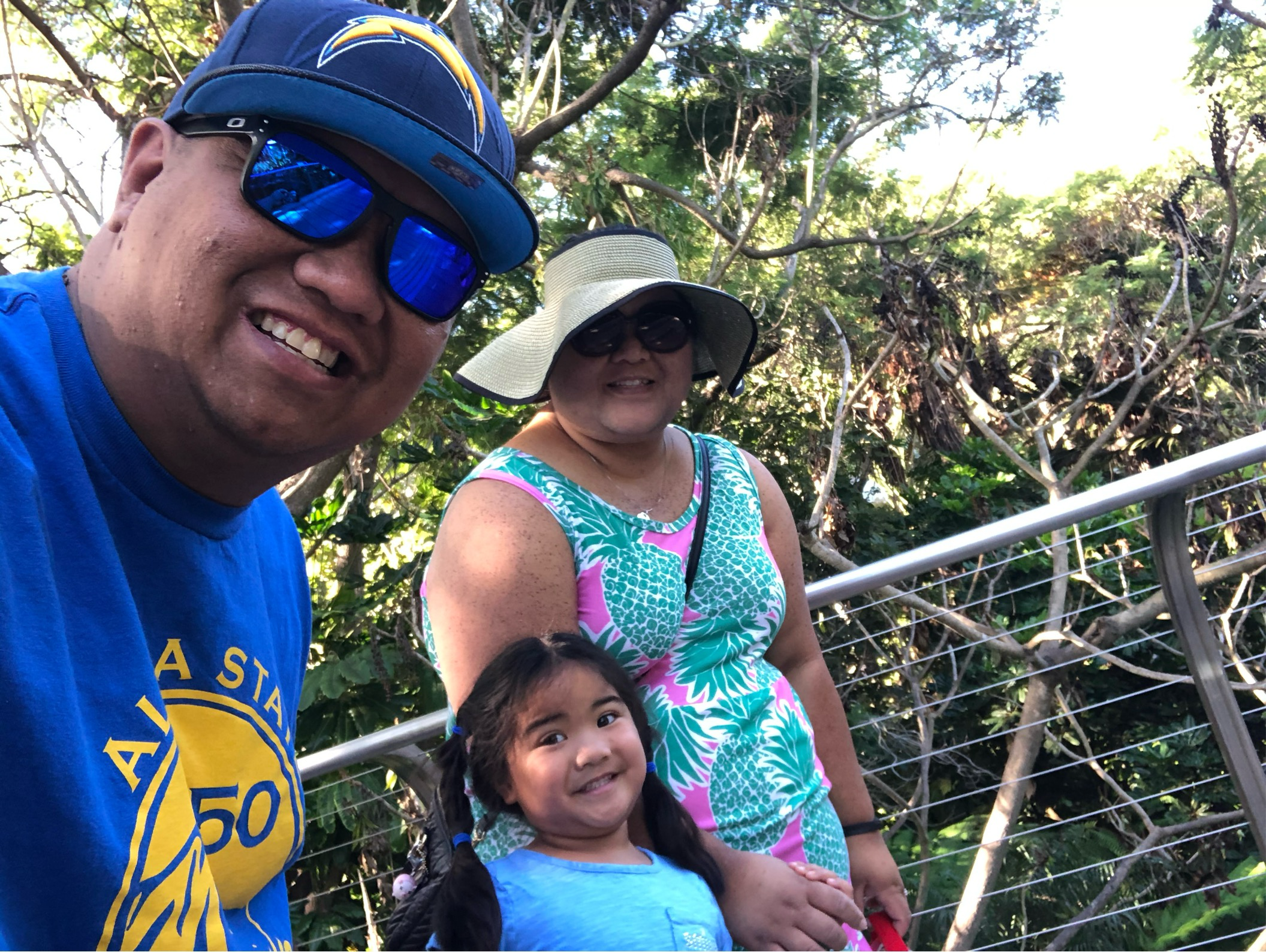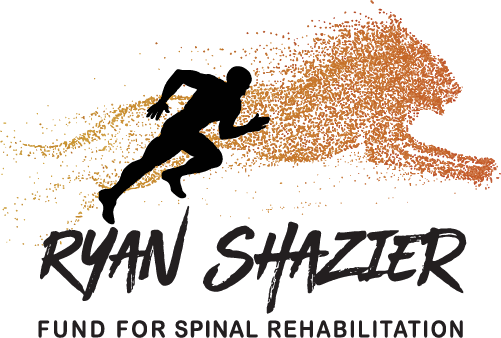by Cathy Cuff-Coffman
Reylyn Cabrera is no stranger to pain–or persistence. See how one woman navigated a spinal cord injury that lasted almost a decade.
I met Reylyn Cabrera three years ago through an Instagram or Facebook #hashtag post. I had posted a question about being a newly injured, somewhat ambulatory tetraplegic. If I remember correctly, she was one of two people that answered. (The other being Tommy Swarts, whom we profiled here).
Both became good friends, and I don’t know why I hadn’t asked Reylyn about doing her story.
But when I finally asked her, she was thrilled. “I didn’t know you wrote those stories; I thought you just posted them!” she exclaimed.
A Friendship That Grew
Our friendship had evolved around so much else that somehow, I neglected to mention that my writing was for The Ryan Shazier Fund!
Reylyn describes herself as an “extroverted introvert and a fat person.” She just turned 44 years old. She’s of Filipino descent, from San Diego, and is, “an awesome wife and mom of one.”
Her daughter is truly her mini-me. She is also a dog lover. “I work full-time at a local community college tutoring center,” she says. “In my spare time, (what spare time?) I make leis out of cash and ribbons.” She also makes cake balls. “Overall, I’m crafty AF and my favorite color is pink.”
Instagram to the Rescue
I started watching her Instagram stories a year ago. They were of her dancing, in her pajamas, with a severe dead-ass face. But they showed her progression as she recovered from her injury. (Those stories disappear after 24 hours; now they show her humorous side.)
She says her life before her injury “wasn’t exciting. I cared for my family, maintained my home, went to work, struggled to stay hydrated, and got enough rest,” offers Cabrera. Again, she brings up her weight.
“I didn’t participate in sports, but I walked 8,000-10,000 steps a day, used the stairs when I could, and always moved and worked at my workplace or home,” says Cabrera. “My body was solid, especially my legs.”
“I had spinal stenosis, the squeezing of my spinal cord in my T8-L2 vertebrae,” explains Cabrera. “This was discovered during an ER visit five years ago.”
39 years old with the back of a 70-year-old
She continues that during that visit, they summoned a neurosurgeon. He explained, “I had so much soft tissue build-up, the neurosurgeon said I had the spine of a 60-70-year-old person, but I was only 39.”
He theorized that it must be a congenital condition, and since Cabrera said, “I have been a fat person for my whole life, I never knew what I had been feeling and experiencing was abnormal. To alleviate the pressure, he performed a laminectomy.”
Walking Machine
However, Cabrera kept having spine issues and had another spine surgery on January 7, 2020. “I’d been experiencing mobility issues leading up to it,” explains Cabrera.
“No one thought to look for the cause. Any doctors I saw always assumed I was lazy and ate too much. The most significant injury before 2020 was in 2013.”
Cabrera was standing at the bathroom sink, toothbrush in hand, and suddenly, her knees gave out from under her. “My knees buckled, and both of my knees and ankles were severely injured, making it very painful to walk or stand,” she offers. “My doctor and the orthopedist were no help in my recovery, nor did they look for the cause of why my perfectly functioning knees suddenly failed. They did suggest I go on a diet and lose weight.”
Baby Oh Baby
By 2014, she could walk again without mobility aids and walked as a bridesmaid in her friend’s wedding. She later found out that she was three months pregnant. “I was very close to returning to my pre-injury activity level,” she says.
By 2019, Cabrera was eating well, attending fitness dance classes, and being active every day. “I started a small walking group at work,” she says.
She was walking her dog in July when she slipped and fell on water runoff from yard sprinklers. “I was covered in mud and blood from lacerations on my knee. My husband had come to pick me up, and I had to halt all of my activity so my injuries could heal,” says Cabrera.
“I tried to build up again, but my limbs were not following my commands to speed up, and I was clumsy,” Cabrera says. “By Thanksgiving, I was still moving slowly, and I was experiencing pain in my back and legs. I was going to the chiropractor and was using a lot of oral pain medicines and topical pain creams and patches.”
Pain on the Sand
The family went on a vacation at the end of 2019. “I was in excruciating pain at the airport, so the airline had someone push me in a wheelchair. I was in so much pain that entire trip. I could not walk in the sand or dip my toes in the ocean. I could not supervise my daughter,” she says with more than a tinge of sadness in her voice.
When they returned home, Cabrera’s body was numb from the waist down. “I couldn’t tell you what my legs and feet were doing if I did not look at them,” she says. “They could be out committing crimes.”
ER Prejudice
“The doctor who saw me at the ER was biased against fat people. I heard him in the next room with another patient. The patient had complaints of numbness in her legs. His voice was cheerful and pleasant in the other room, but when he entered my room, I saw a visceral change in his facial expression,” she notes. “His speech was brusque and curt. He kept mentioning needing to lose weight. I insisted that something was wrong, don’t send me home!” She pleaded with him.
He ordered an MRI, and he told her the results showed him nothing. “Just go home, take pain meds, and lose weight,” he said Cabrera.
That was on Sunday. By Tuesday, she tripped and fell in her home. “Now I could feel everything below the waist, and it was pain,” she says. She went back to the same ER but had a different doctor. “He listened to me, and when he was going to order an MRI, I told him I’d had one there just a couple of days ago. He left me in my exam room to pull up the MRI results. He came back and explained that he noticed something irregular, so he called for a neurosurgeon to take a look,” she says.
StenOHSis
“That’s when they discovered the stenosis.” She was checked into the hospital as a fall risk and was given steroids. There were more tests and imaging. “I had to decide to prepare for surgery as soon as possible or wait until I needed the surgery.”
“I opted to have it done ASAP,” she says. “Who knows how many more times I’d fall and hurt myself if I waited? I spent the remainder of 2019 (including my 40th birthday) in my home, waiting for a surgery date. I finally got the call that it would happen on January 7, 2020.”
She left the hospital for rehab as a T8-L2, incomplete. It had been a seven-year debacle.
She was initially told that her recovery would take approximately three months, including PT at home.
However, she did temporarily lose function and sensation in her legs. “No one mentions all of the other functions I’d lose. I wasn’t scared yet. I was still optimistic and had faith in what my neurosurgeon told me.”
Outdated Rehab
The rehab Cabrera was transferred to what she describes as an “outdated metal bed that had a chain dangling above [her] head. It looked like something you see being towed by a landscaper’s truck.”
“All I can say is I can bear the physical pain, but I’ve never experienced that level of emotional pain,” she says. “I was terrified, and I couldn’t rationalize anything; I couldn’t find any hope to cling to, and I didn’t have any foundation. I was used to being the rock for everyone else, but now I was fully submerged and couldn’t discern where the surface was.”
Cabrera stayed in inpatient rehab for a little more than two months, and her outpatient rehab, “was excellent!! My outpatient therapies were also at the same facility where I stayed as an inpatient, Sharp Alison DeRose Rehabilitation Center at Sharp Memorial Hospital. I graduated from outpatient PT on April 1, 2021,” she says proudly.
It’s been four years since Cabrera’s injury. When she first woke up from surgery, had no control over her right leg and foot.
But through hard work in PT and at home, she now has limited control of both. “I can walk on my leg, and my foot is strong enough for me to drive!” she offers. “But it’s still weaker than my left leg, and I can’t make precise, controlled movements with it.”
The Residuals
“I have chronic pain. On my good days, it’s a 3,” she adds, using a scale of 1-10. “I have trouble regulating my body temperature, so I avoid extreme heat or cold.”
She has digestive trouble, so she can no longer enjoy the many foods she used to love unless she accepts the consequences, and she can no longer eat large portions at one time.
“I have reduced sensation in my legs from the knees down. My legs always feel cold to me. I avoid wearing pants because the sensation of fabric brushing against my calves is distracting,” she admits.
“And, I sometimes have debilitating anxiety, especially when it comes to visiting unfamiliar places; I don’t know if they will have a readily available bathroom or accessible space to accommodate my mobility aides,” she sadly admits.
“Despite all of these things, I do not regret my decision to have the laminectomy. If I had waited, I only would’ve slowly lost control of my body and experienced more pain. I can participate and be a witness to my family members’ lives. I can advocate for people with disabilities in my workspace using my knowledge and experience, especially regarding accessibility. I continue to be of service to others.”
Shalieve
Wisdom

Reylyn Cabrera's Words of Wisdom
When the doctor/surgeon explains something in language you don’t understand, ask them to clarify it. It was easier for me to grasp and process what was happening. If you need to write down keywords so you can Google them later, do so. People will keep asking you what is happening, so it’s better to explain it in a way you can retell it to others. Not only can these people spread the word for you accurately, but they can also spread awareness about SCI.
Identifying and feeling the “negative” emotions you are experiencing is okay. If available, access a counselor or therapist to help you process your thoughts and feelings. When I was in rehab, some doctors routinely stopped by to check in, assess, and check-in. They can help you find productive and healthy ways to process your emotions when they get messy. Avoidance and toxic positivity are not healthy ways to cope. Encourage your loved ones, especially the ones who will be your caretakers, to do the same.
Interact with other patients while you are at rehab. It helps build community and will lessen the feelings of loneliness, both as an inpatient and outpatient. It helps to be with people who are going through similar experiences. Even simply greeting another patient with the same appointment time as you help. We’d greet and cheer for each other during my inpatient and outpatient therapies. During one of my OT sessions, I was told to punch a punching bag while standing. So many other patients complimented me on my progress, and they asked their therapists if they could use the punching bag in the future. As comforting as my family and loved ones are, they may never fully understand what you are experiencing. Sometimes, they may opt for toxic positivity, which they do not realize they are doing.
Participate in activities or groups outside of your therapies. My rehab center held viewing parties in the main TV room, weekly lunchtimes on the patio, modified art activities, or modified gardening. They invited representatives to talk about alternative sports like modified surfing. It offers a great distraction and reminds you that rehab will not last forever.
If you are on social media, follow some hashtags. I followed #spinalcordinjury and #SCIrecovery. I was able to find content creators who are sharing their recovery journey, some who are advocating for disability rights. As someone newly injured, it helped me see what my journey may look like and what to expect. Four years later, I read and commented on newly injured patients’ posts to offer support and validation.
Take your PT and OT sessions seriously, especially during the first 12-18 months. Do your best at each session. Please communicate with your therapist so they can modify exercises and activities for you. You should leave each session a little tired, frustrated, and hungry to do better in the next session. Make that next session your bi*ch. If your PT or OT gives you exercises to do at home, do them. If you graduate from rehab, keep doing your workouts and stay active. Sometimes, lost mobility is from non-use, not your injury, so don’t lose what you worked hard to regain.
Take care of your body. Your body is precious. Even if you are angry and feel that it is useless, do not abuse yourself. Some people may not feel it when boiling water is poured onto their leg; the leg will still bounce and move to avoid it. In the beginning, when I was in a wheelchair, I carelessly rounded corners so that my knees would bump into walls. It’s a good thing I started being more careful because almost a month later, that leg started moving again. 4 months after that, I was cleared to use a walker, and 12 months after that, I was cleared to use a cane. If I continued to neglect and abuse my legs, I might’ve made it more challenging to be able to stand and walk again. Caring for your body also includes eating, sleeping, and taking medications. For the best results, you need to be at your best.
You don’t have to allow everyone access to you. I did not allow everyone from work or every family member to come and visit me at rehab. I only allowed a few people to visit. I did not have time because I was on a strict schedule of therapies, meals, and meds. I did not have the energy to entertain and answer questions. I did not feel confident to see people face-to-face. When I was in rehab, I was in a wheelchair with a moon face and no hair.



